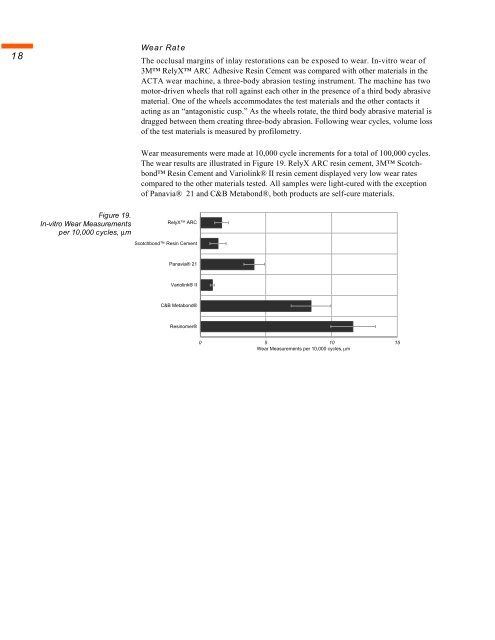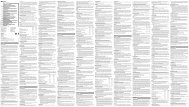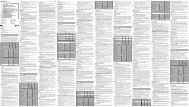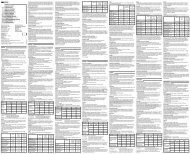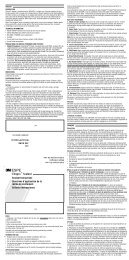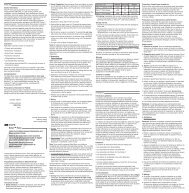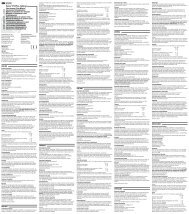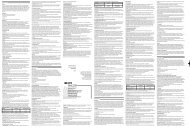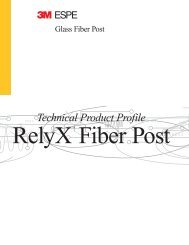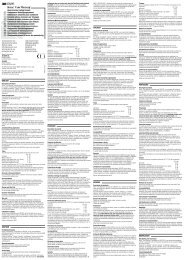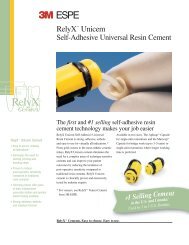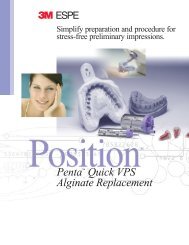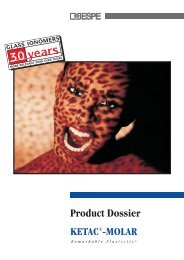RelyX⢠ARC Adhesive Resin Cement - Dale Dental
RelyX⢠ARC Adhesive Resin Cement - Dale Dental
RelyX⢠ARC Adhesive Resin Cement - Dale Dental
Create successful ePaper yourself
Turn your PDF publications into a flip-book with our unique Google optimized e-Paper software.
18<br />
Wear Rate<br />
The occlusal margins of inlay restorations can be exposed to wear. In-vitro wear of<br />
3M RelyX <strong>ARC</strong> <strong>Adhesive</strong> <strong>Resin</strong> <strong>Cement</strong> was compared with other materials in the<br />
ACTA wear machine, a three-body abrasion testing instrument. The machine has two<br />
motor-driven wheels that roll against each other in the presence of a third body abrasive<br />
material. One of the wheels accommodates the test materials and the other contacts it<br />
acting as an “antagonistic cusp.” As the wheels rotate, the third body abrasive material is<br />
dragged between them creating three-body abrasion. Following wear cycles, volume loss<br />
of the test materials is measured by profilometry.<br />
Wear measurements were made at 10,000 cycle increments for a total of 100,000 cycles.<br />
The wear results are illustrated in Figure 19. RelyX <strong>ARC</strong> resin cement, 3M Scotchbond<br />
<strong>Resin</strong> <strong>Cement</strong> and Variolink® II resin cement displayed very low wear rates<br />
compared to the other materials tested. All samples were light-cured with the exception<br />
of Panavia® 21 and C&B Metabond®, both products are self-cure materials.<br />
Figure 19.<br />
In-vitro Wear Measurements<br />
per 10,000 cycles, µm<br />
RelyX <strong>ARC</strong><br />
Scotchbond <strong>Resin</strong> <strong>Cement</strong><br />
Panavia® 21<br />
Variolink® II<br />
C&B Metabond®<br />
<strong>Resin</strong>omer®<br />
0 5 10 15<br />
Wear Measurements per 10,000 cycles, µm


